Overview
In the demanding world of healthcare, providers often face emotional challenges that can weigh heavily on their ability to deliver quality care. The administrative burdens associated with documentation can detract from the time spent with patients, leaving practitioners feeling overwhelmed.
This article introduces various templates for work notes, such as SOAP and DAP, designed to enhance documentation efficiency. These structured templates not only streamline record-keeping but also significantly reduce administrative tasks. Imagine being able to reclaim precious time that can be redirected toward patient care—this is the transformative potential of these methods.
Healthcare providers have reported substantial time savings when utilizing these templates, allowing them to focus on what truly matters: their patients. By adopting these efficient documentation practices, you can alleviate some of the stress that comes with administrative duties.
We encourage you to explore these templates and consider how they might fit into your practice. Together, we can prioritize patient care and create a more supportive healthcare environment.
Introduction
In a healthcare environment increasingly overwhelmed by administrative tasks, the emotional toll on providers is significant. The need for efficient documentation solutions has never been more critical. This article explores nine innovative work note templates designed to lighten this burden, allowing healthcare professionals to focus on what truly matters—patient care.
As the medical landscape evolves with the integration of AI and structured documentation methods, we must ask:
- How can these templates transform the way healthcare providers manage their records?
- More importantly, how can they enhance the quality of care that patients receive?
Let's explore these compassionate solutions together.
CosmaNeura: AI-Powered Documentation for Healthcare Providers
CosmaNeura is at the forefront of transforming medical records with its AI-driven platform tailored for primary service providers. Imagine a world where medical professionals can dedicate more time to patient care instead of being bogged down by administrative tasks. By automating these burdens, the platform allows healthcare providers to focus on what truly matters—their patients.
Key features such as real-time transcription, diagnostic assistance, and billing enhancement simplify the documentation process, leading to improved medical delivery efficiency. For instance, have you ever felt overwhelmed by paperwork? Medical service providers using AI-powered notetaking applications have experienced a remarkable 69.5% reduction in time spent on administrative tasks, reclaiming an average of three hours each week. This innovative approach not only saves essential time but also adheres to , ensuring that care remains compassionate and centered on individual needs.
As the medical landscape evolves, the integration of AI technologies is expected to enhance record-keeping efficiency significantly. In fact, by 2025, it's projected that 90% of hospitals will likely adopt AI-driven technology for early diagnosis and remote monitoring of individuals. By embracing these advancements, CosmaNeura is setting a new standard for effective and ethical medical record-keeping. Are you ready to join this transformative journey and prioritize patient care over paperwork?
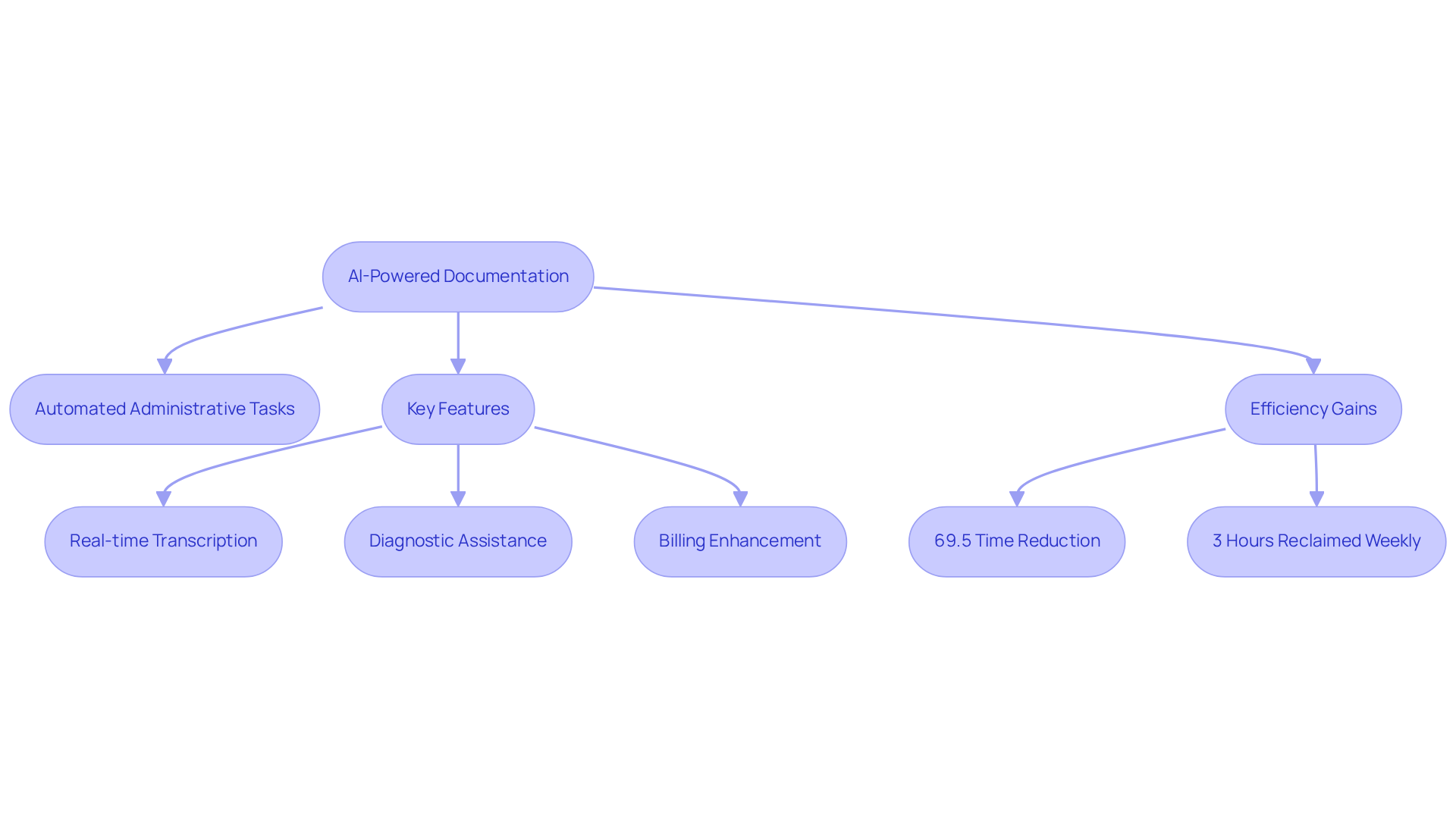
SOAP Note Template: Structured Patient Documentation
The SOAP (Subjective, Objective, Assessment, Plan) note template serves as a vital tool for medical professionals, helping them navigate the complexities of patient encounters with care and precision. By organizing information into four distinct sections, this framework captures not only the individual's subjective experiences but also objective findings, clinical evaluations, and planned interventions. This enhances the clarity of medical records and significantly improves communication among healthcare teams, fostering better coordination of services.
As we look to the future, it's heartening to note that in 2025, the use of structured documentation like SOAP notes is expected to increase. A remarkable 66% of physicians have reported utilizing AI tools, such as Medwriter and HealthOrbit AI, to streamline their documentation processes. This shift not only alleviates administrative burdens but also allows healthcare providers to focus more on what truly matters: the well-being of their patients.
Consistent use of SOAP notes has been shown to improve outcomes for individuals by providing clear treatment plans and minimizing miscommunication. Consider case studies like 'Importance of Detailed Documentation' and 'Impact of Accurate SOAP Notes on Financial Health.' These examples illustrate how well-maintained SOAP notes lead to improved clinical decision-making and better management of individuals, ultimately benefiting both providers and those receiving care.
Moreover, well-crafted SOAP notes serve as essential legal documents, ensuring compliance and protection during audits and billing checks. It's crucial to avoid vague or ambiguous entries in SOAP notes, as specificity is vital for clear communication and effective treatment. By embracing structured documentation, we can enhance the quality of care and provide the support that patients truly deserve.
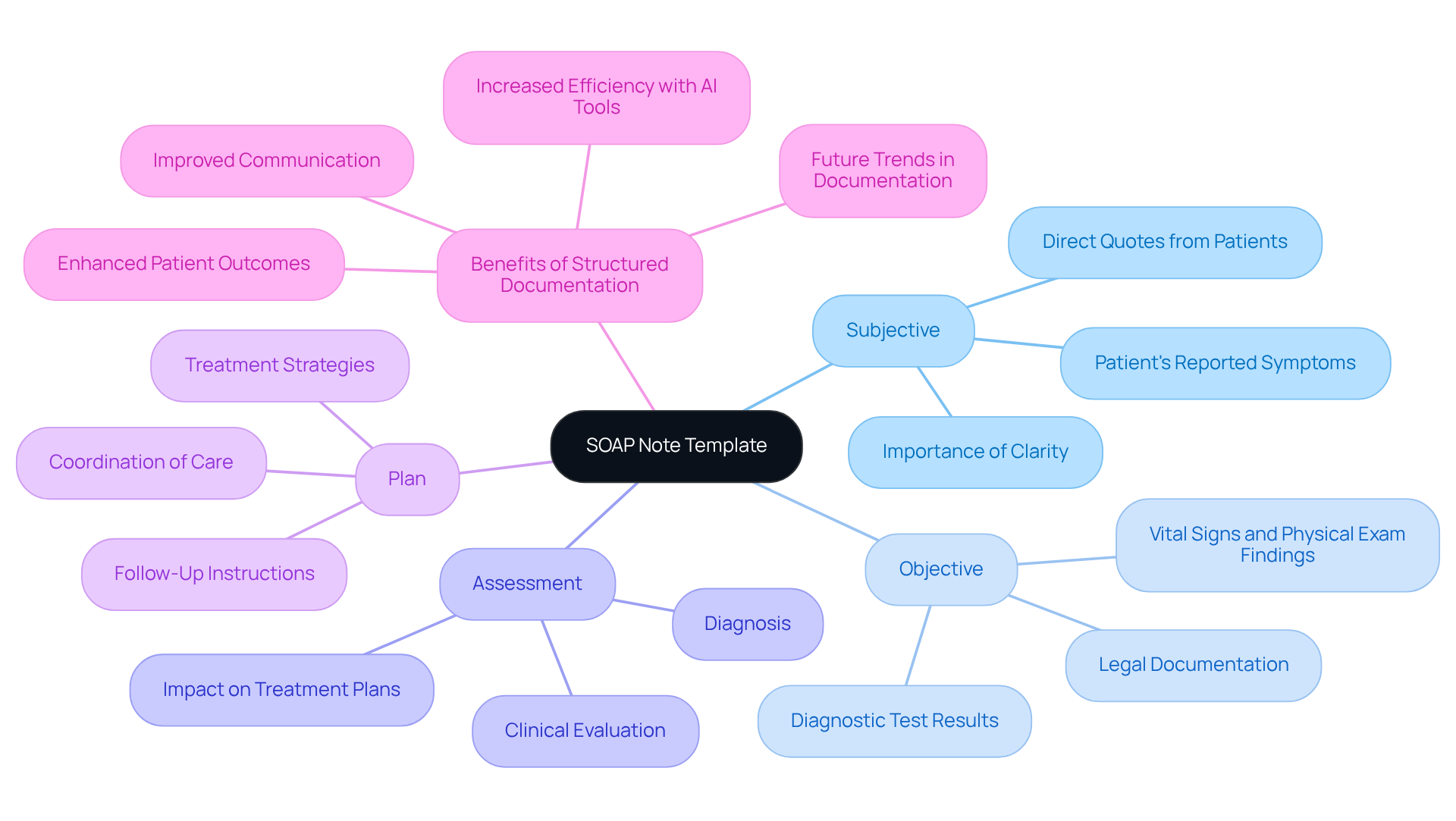
DAP Note Template: Simplified Clinical Documentation
The DAP (Data, Assessment, Plan) note template is designed with simplicity and effectiveness in mind, addressing the emotional challenges faced by healthcare providers in clinical documentation. It encompasses three essential elements:
- The information gathered during the client encounter
- The clinician's thoughtful evaluation of the situation
- The strategy for future support
This streamlined approach not only enables medical providers to swiftly document vital information but also ensures that no critical details are overlooked.
In dynamic clinical settings, where time is often limited, the DAP format significantly improves record-keeping efficiency. This allows providers to —caring for their patients—rather than becoming bogged down by administrative duties. Recent trends indicate a growing preference for streamlined clinical record-keeping methods, as they not only save time but also enhance communication among healthcare professionals. As Vivian Chung Easton insightfully notes, "Its clarity and focus on actionable elements has made it popular in various clinical settings, especially for insurance compliance."
By adopting DAP notes, providers can enhance their record-keeping practices, ultimately leading to improved health outcomes and increased job satisfaction. Consider how DAP notes can be particularly beneficial in crisis intervention sessions, showcasing their versatility across various therapeutic contexts. The organized nature of DAP notes assists in arranging client information for upcoming sessions, ensuring thorough and actionable records.
Reflect on the ways DAP notes can alleviate some of the administrative burdens you face. Embracing this structured method could transform your practice, allowing you to provide even better care to your clients.
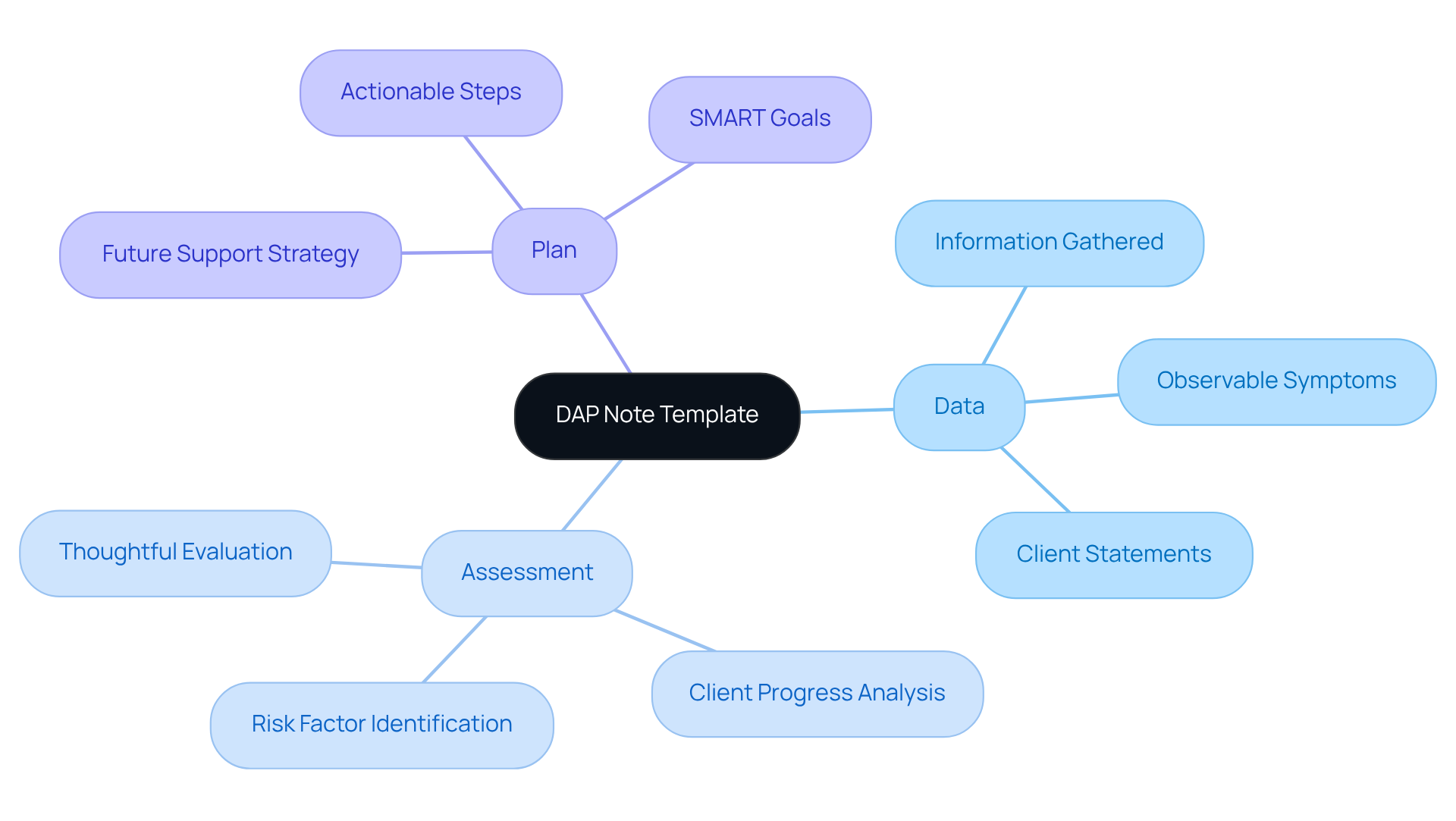
BIRP Note Template: Effective Mental Health Documentation
The BIRP (Behavior, Intervention, Response, Plan) note template serves as a compassionate tool for mental health record-keeping. It thoughtfully captures not just the individual's behavior during sessions, but also the interventions applied by the clinician, their responses, and the plans for future sessions. This format does more than assist in thorough documentation; it by ensuring that every aspect of care is considered and recorded.
Mental health specialists often face emotional challenges in their practice, and the administrative burdens can weigh heavily on patient care. By utilizing the BIRP template, professionals can alleviate some of these pressures, leading to more effective client records. Imagine the peace of mind that comes with knowing that all facets of care are documented with care. This approach not only enhances the quality of care but also fosters a deeper connection with clients.
Consider how the BIRP template can transform your practice. It encourages a holistic view of client interactions, ensuring that every session is meaningful and impactful. By embracing this structured method, you can focus more on what truly matters—the well-being of your clients. Let’s take a step towards improving our documentation and, ultimately, our therapeutic relationships.
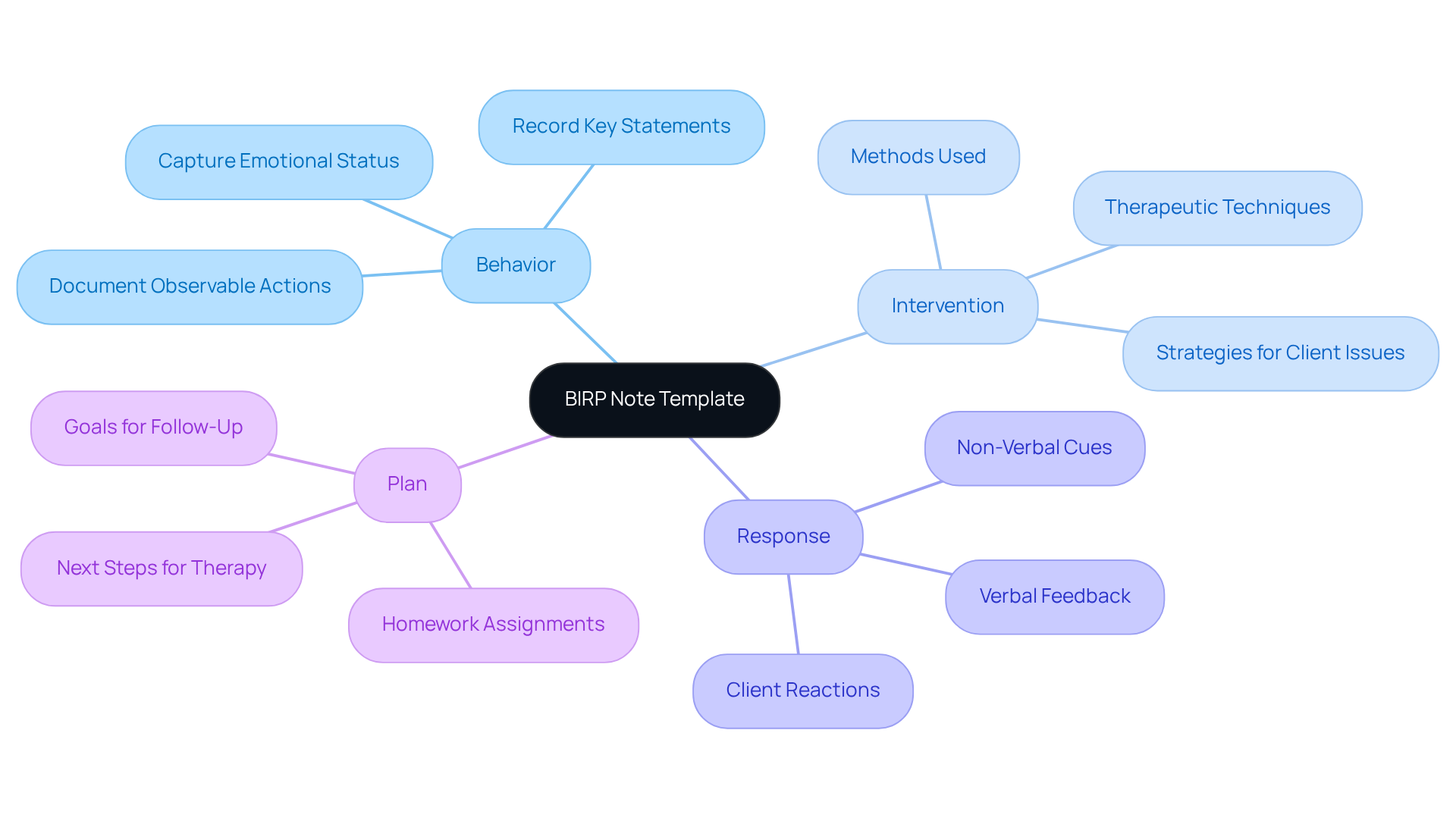
GIRP Note Template: Goal-Oriented Patient Tracking
The GIRP (Goal, Intervention, Response, Plan) note template serves as a compassionate tool for monitoring progress against specific health objectives. Have you ever felt overwhelmed by the administrative burdens that can distract from patient care? This organized method encourages healthcare providers to , document the interventions used, record responses, and outline future plans. By prioritizing goal-oriented care, we can significantly enhance client engagement, ensuring that treatment strategies are tailored to meet individual needs.
This customized approach not only fosters a sense of ownership among individuals but also relates to improved health outcomes. Research indicates that individuals who actively engage in goal setting are more likely to achieve their health objectives. In fact, 75% of Veterans have stated they established health goals in the past six months, and 42% of those who set goals reported success in achieving their primary goal. Furthermore, the GIRP notes facilitate continuous monitoring of individual progress, allowing for timely modifications to treatment plans, thus enhancing the overall efficiency of service delivery.
Consider how implementing the GIRP template can transform your practice. By embracing this method, you not only support your clients in their health journeys but also contribute to a more effective healthcare environment. Let's work together to create a nurturing space where individuals feel empowered to take charge of their health.
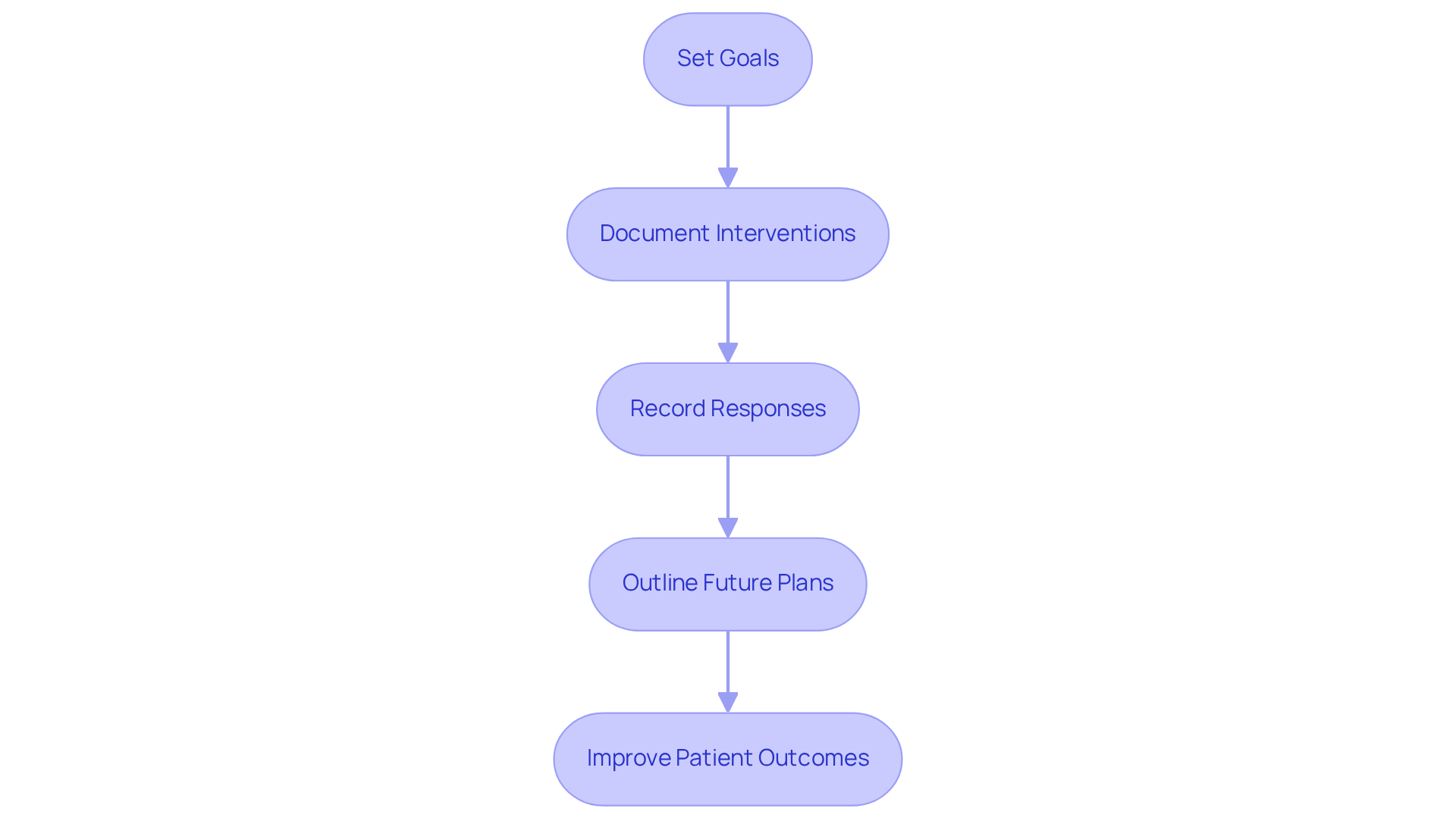
PIRP Note Template: Concise Patient Interaction Documentation
Healthcare providers often face significant emotional challenges due to the demands of their roles. The administrative burdens can take away from the quality of care they wish to provide. The PIRP (Problem, Intervention, Response, Plan) note template emerges as a caring solution to these issues. This effective resource allows for brief recording of client interactions in an organized manner, enabling providers to gather crucial information efficiently.
Imagine being able to quickly document the individual's issue, the interventions implemented, their reactions, and the strategy for future support. By simplifying the paperwork process, the PIRP template significantly decreases the time spent on forms. This shift allows providers to devote more attention to their clients' needs, fostering a more compassionate healthcare environment.
Research indicates that efficient record-keeping methods can reduce clinician burnout and enhance overall service delivery. By adopting the PIRP template, providers can experience a profound impact on their workflow and emotional well-being. It stands as an essential resource in contemporary medical settings, empowering healthcare professionals to focus on what truly matters—their patients.
If you're looking to improve your practice and reduce stress, consider implementing the PIRP template. It not only streamlines documentation but also nurtures a more patient-centered approach to care. Your commitment to your patients deserves the , and the PIRP template is here to support you.
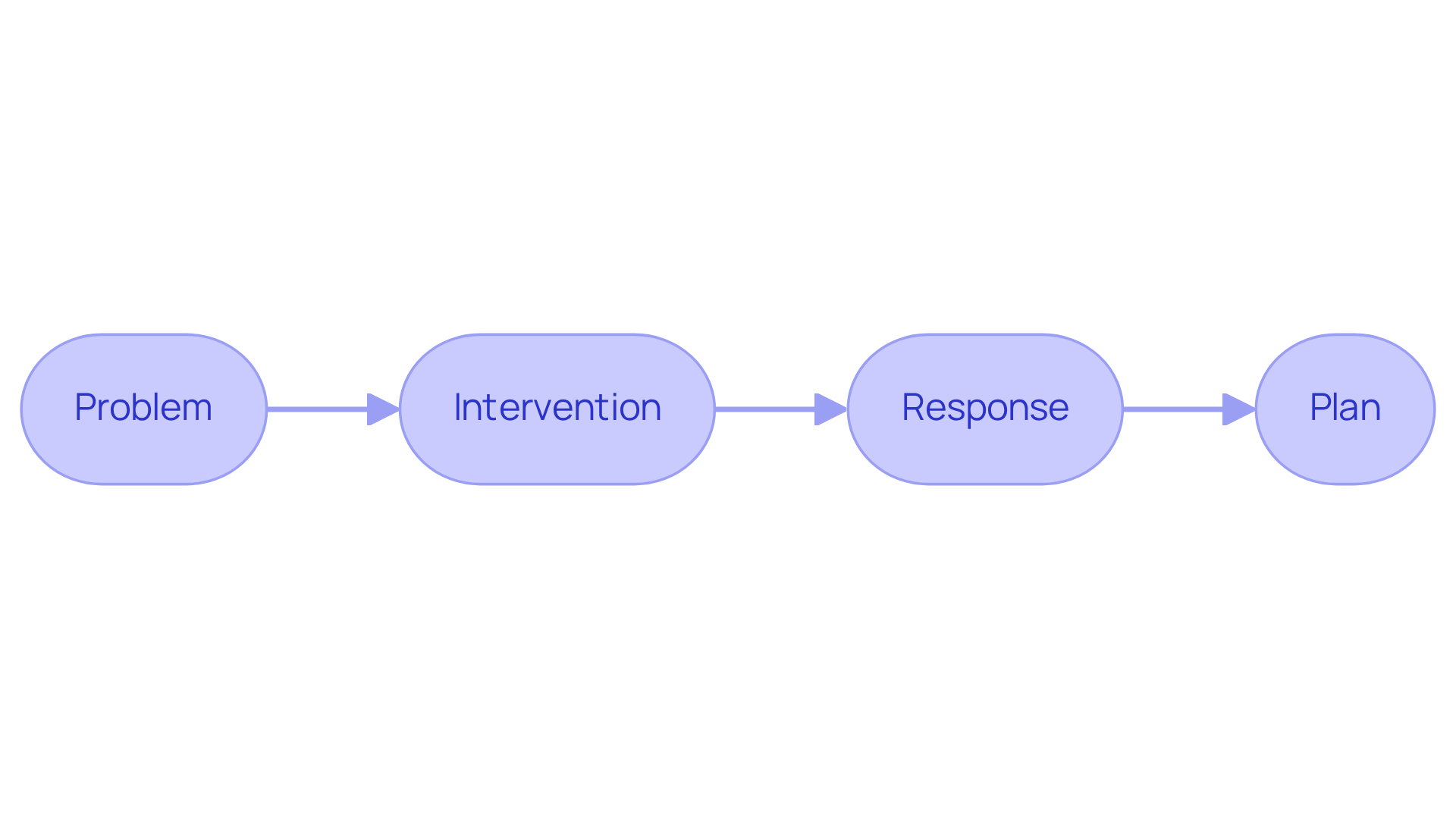
PIE Note Template: Comprehensive Patient Care Documentation
In the demanding world of healthcare, providers often face emotional challenges, including the pressure of maintaining accurate records. The PIE (Problem, Intervention, Evaluation) note template offers a systematic and thorough method for documenting vital health information. By carefully recording an individual's issues, the interventions implemented, and the assessment of their progress, medical providers can ensure that every essential aspect of treatment is captured.
This comprehensive approach not only enhances communication among medical teams but also fosters continuity of care, which is crucial for patient well-being. As we look toward 2025, when medical systems will increasingly rely on precise and thorough records, the PIE format becomes even more advantageous in environments where safety and quality of care are paramount.
Thorough records are essential for avoiding potential legal issues, reducing malpractice insurance costs, and to meet individual needs. Consider how efficient record-keeping can lead to quicker recovery times and improved outcomes for patients. This highlights the importance of utilizing organized formats like PIE notes in today’s healthcare landscape.
Are you ready to embrace a method that not only supports your practice but also enhances patient care? By adopting the PIE note template, you can contribute to a more compassionate and effective healthcare system, ensuring that every patient receives the attention and care they deserve.
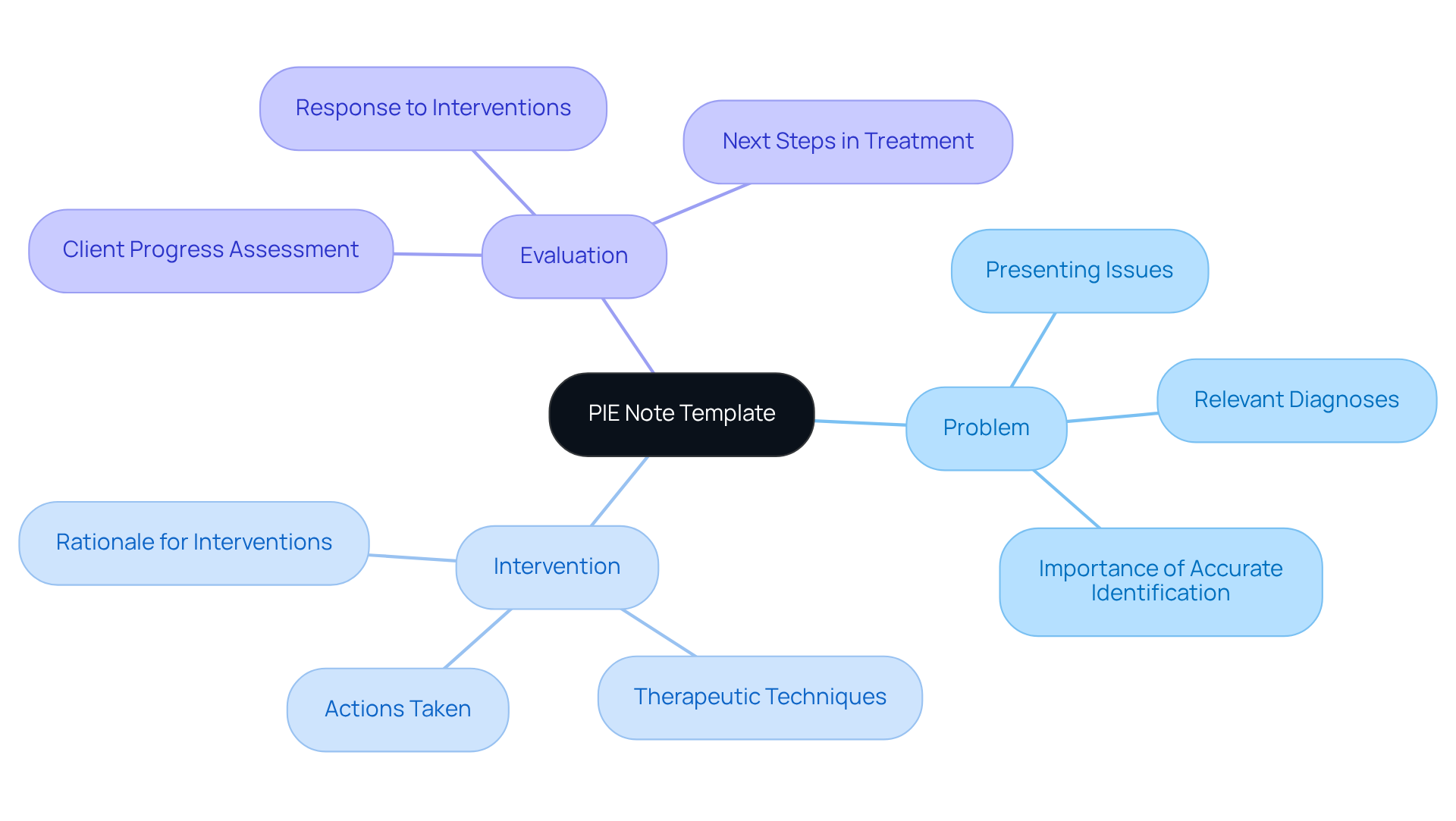
Custom Format Template: Tailored Documentation Solutions
Healthcare providers often face emotional challenges due to overwhelming administrative tasks. Custom format templates, such as a work note from doctor template, offer a compassionate solution, allowing them to create record solutions tailored to their unique needs and specialties. By developing these customized work note from doctor templates, providers can gather all relevant information in a manner that aligns with their practice and client demographics. This adaptability not only enhances the relevance and quality of patient records but also significantly improves record-keeping efficiency.
Studies indicate that customized record solutions can reduce the time spent on paperwork. Intelligent document processing (IDP) is capable of cutting document processing time by 50% or more. Imagine the relief of having more time to focus on patient care rather than getting bogged down in paperwork. Moreover, the incorporation of advanced functionalities such as predictive text and auto-population in the work note from doctor template simplifies the writing process, ensuring that all essential information is included without excessive repetition.
For instance, Sunny Peak Health System achieved a remarkable 61% decrease in provider time spent on clinical notes after implementing tailored documentation solutions. As the medical field continues to evolve, the significance of these customized solutions in enhancing operational efficiency and patient outcomes cannot be overstated. Studies indicate a potential ROI of 30-200% in the first year of automation, highlighting the profound impact these changes can have.
However, it is essential to acknowledge that trust, transparency, and risk concerns remain critical barriers to AI adoption in healthcare. By addressing these concerns with empathy and understanding, we can work together to foster a more efficient and compassionate healthcare environment. What steps can you take today to ?
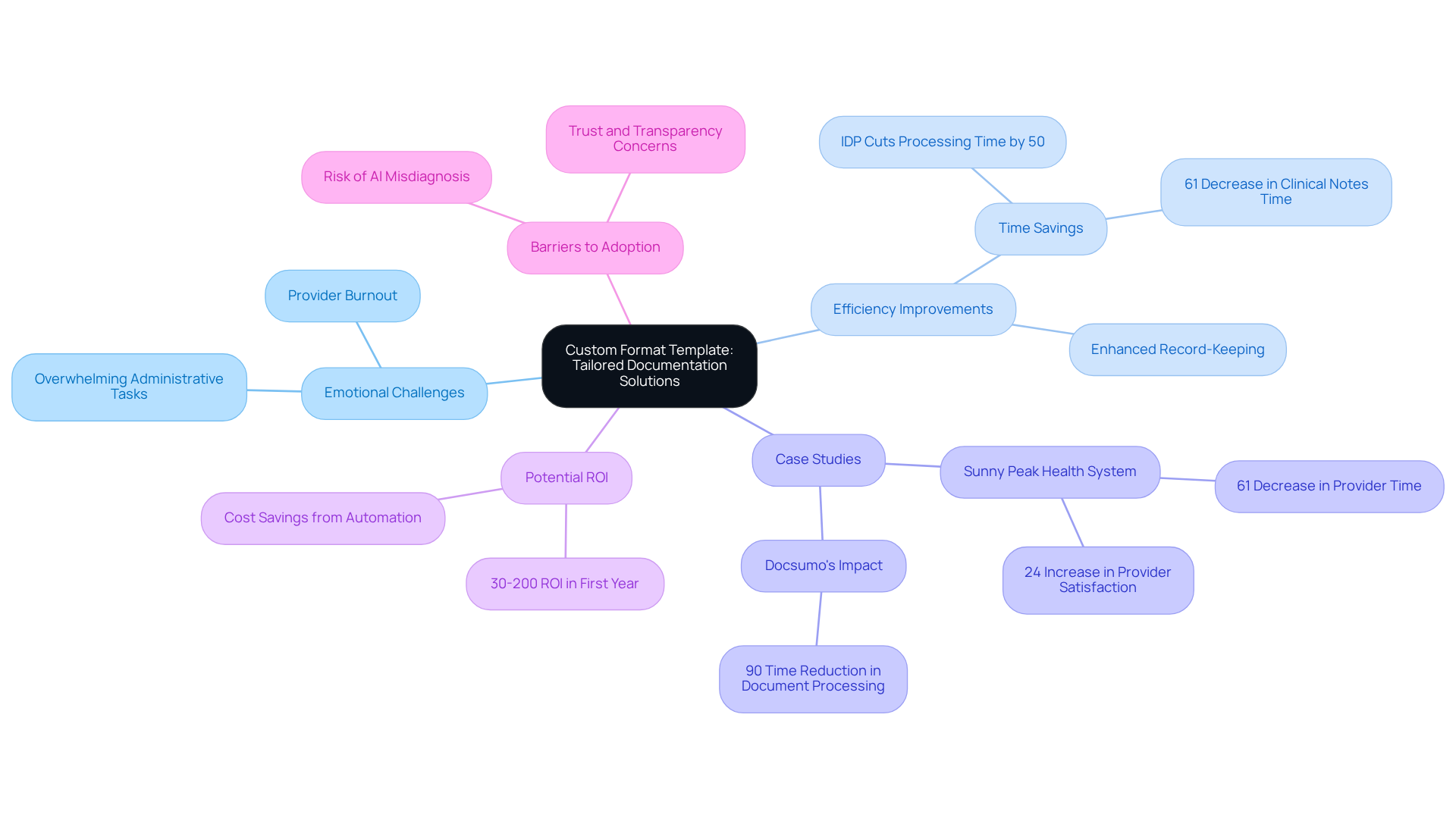
Telehealth Note Template: Efficient Virtual Visit Documentation
The telehealth note template serves as a vital tool for healthcare providers navigating the complexities of virtual visits. Have you ever felt overwhelmed by the documentation demands during these sessions? This template is designed to capture essential information specific to telehealth interactions, such as:
- Patient concerns
- Clinician observations
- Any interventions performed
By utilizing this format, providers can ensure that telehealth visits are documented thoroughly, maintaining the same quality of care as in-person visits.
This thorough documentation is not just a matter of compliance; it’s crucial for continuity of treatment and meeting regulatory requirements in telehealth practices. Imagine the peace of mind that comes from knowing every detail is recorded accurately, allowing you to focus on what truly matters: your patients. By embracing this template, you’re taking a significant step towards enhancing the quality of care you provide, even in a virtual setting.
Let’s work together to make telehealth a seamless experience for both you and your patients. Consider how this simple yet effective tool can transform your practice, ensuring that every visit is as impactful as possible. Your commitment to deserves the best support, and this template is here to help you achieve that.
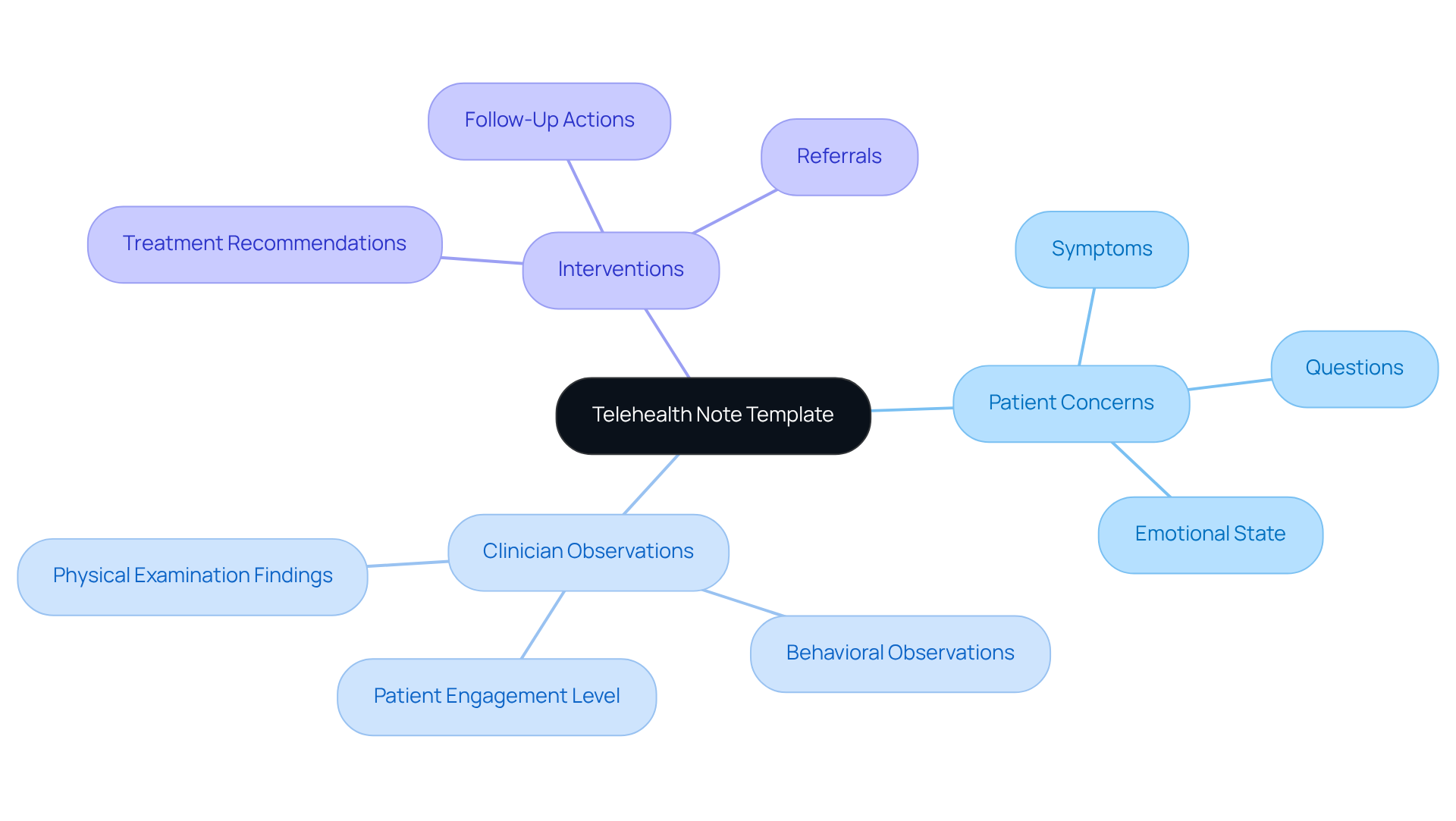
Case Management Note Template: Coordinated Care Documentation
The case management note template plays a vital role in recording the coordinated assistance efforts among various providers. This organized format captures essential details regarding the individual's , contributions from different team members, and the individual's progress. By diligently documenting all relevant information, the template fosters efficient communication and teamwork among medical teams—elements crucial for achieving the best outcomes for individuals.
In the ever-evolving landscape of healthcare, the importance of individualized support cannot be overstated. Are we truly considering every aspect of a person's health? As we look ahead to 2025, the benefits of organized treatment records are increasingly recognized. Research shows that high levels of service coordination can lead to decreased readmission rates and lower medical expenses. For example, the Health Quality Partners Program demonstrated a remarkable 25% reduction in hospitalizations and a 28% decrease in emergency department visits.
Moreover, effective record-keeping practices not only enhance patient outcomes but also streamline workflows. This allows healthcare providers to focus more on delivering quality care. As the case management market is anticipated to grow to $12.4 billion by 2029, the emphasis on coordinated care documentation will remain a critical factor in improving healthcare delivery. Let us embrace these practices, supporting one another in the pursuit of better health for all.
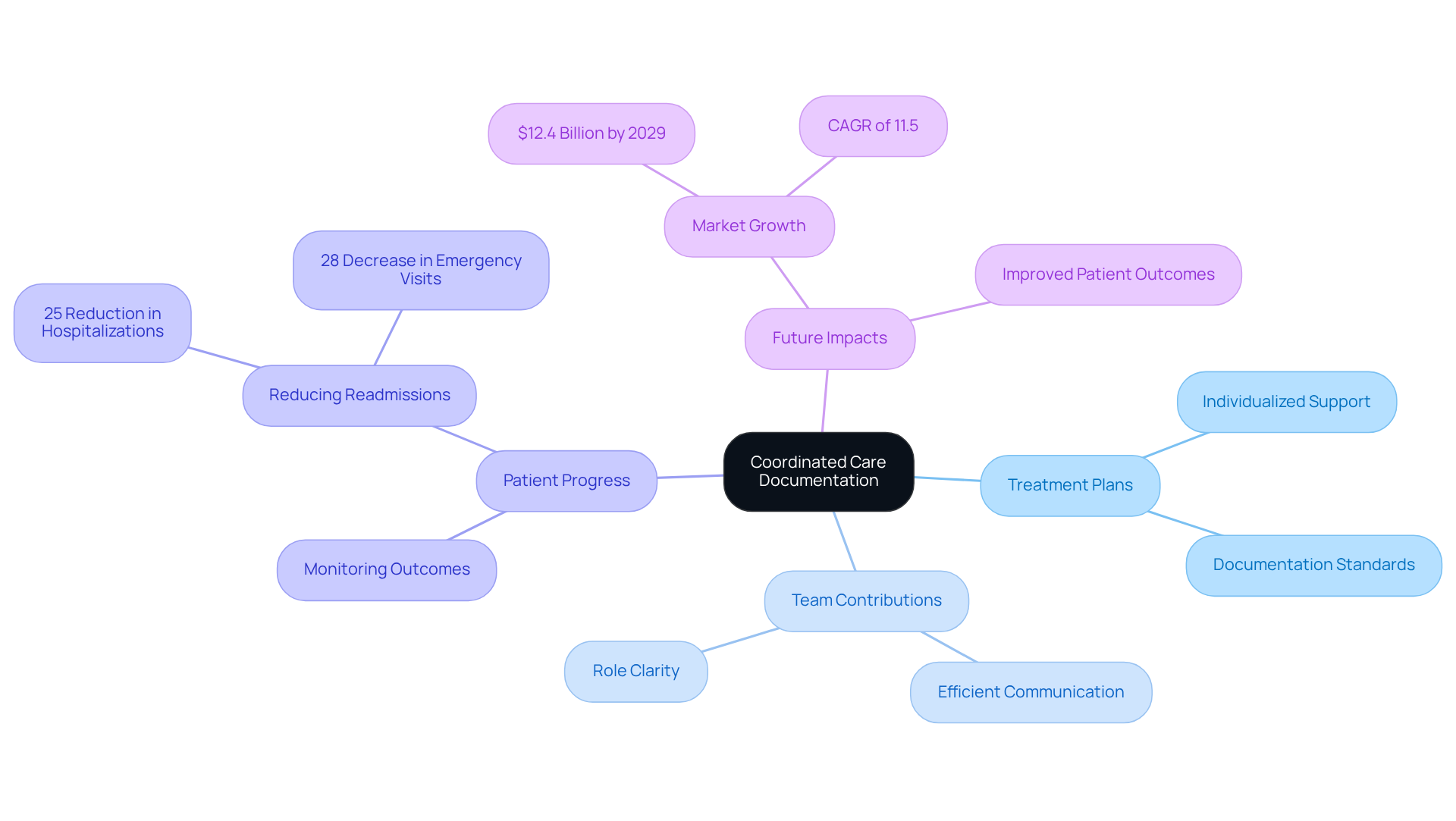
Conclusion
The integration of structured documentation templates in healthcare is transforming how providers manage patient information, ultimately enhancing the quality of care. By utilizing tools like the SOAP, DAP, BIRP, GIRP, PIRP, PIE, and custom format templates, healthcare professionals can streamline their documentation processes, reduce administrative burdens, and focus more on patient interactions. This shift not only improves efficiency but also fosters a more compassionate approach to healthcare.
Consider the emotional challenges faced by healthcare providers. The demands of documentation can often overshadow the core mission of patient care. However, key insights throughout this article highlight how these documentation templates can alleviate such burdens. For instance, the SOAP note template enhances communication among healthcare teams, while the DAP format simplifies clinical documentation, allowing for better focus on patient care. The BIRP template nurtures the therapeutic relationship in mental health settings, and the GIRP format encourages goal-oriented care. Additionally, the PIRP and PIE templates ensure concise and comprehensive documentation, respectively, promoting effective treatment planning and evaluation. Each method presents a unique advantage, contributing to improved patient outcomes and provider satisfaction.
As the healthcare landscape continues to evolve, embracing these structured documentation solutions is imperative for fostering a more efficient and patient-centered environment. The adoption of AI-powered tools, such as CosmaNeura, further supports this transformation by automating documentation processes and enhancing record-keeping efficiency. Healthcare providers are encouraged to explore these innovative solutions and implement the templates that best suit their practice needs.
By prioritizing effective documentation, the focus can shift back to what truly matters—delivering exceptional care to patients. Let’s embrace this opportunity to enhance our practice and ensure that we are providing the compassionate care our patients deserve.




